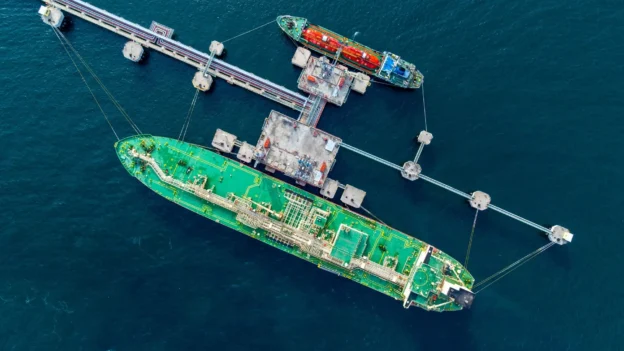AET, one of the most important global operators in the energy maritime sector, has announced the signing of contracts with the South Korean shipyard Samsung Heavy Industries (SHI) for the construction of two Suezmax dual-fuel LNG-powered vessels. With this contract AET seeks to modernize its fleet to make it less polluting.
Characteristics of Suezmax vessels
The vessels will be of the Suezmax type, which means that they are specifically designed to pass through the Suez Canal with the maximum permitted capacity. In addition, apart from being dual fuelThe vessels will incorporate technologies to be more efficient and less polluting, such as:
- High efficiency engine: Designed to burn less fuel and minimize methane (a potent greenhouse gas) leakage.
- SVESSEL” system: It will allow real-time monitoring of performance and safety to optimize its operation.
- Hull improvements: These include devices (such as the SAVER duct and rudder bulb) that reduce water resistance, making the boat sail with less effort and consume less fuel.
- Bow design and electrical systems: variable frequency drive (VFD) systems and a hybrid vertical bow will optimize propulsion and reduce emissions
Why LNG?
The use of liquefied natural gas as the main fuel will enable these ships to reduce greenhouse gas emissions by 14% to 23% compared to conventional marine fossil fuels. They will also drastically decrease levels of particulate matter, sulfur oxides (SOₓ) and nitrogen oxides (NOₓ).
AET is also exploring the use of bio-LNG and synthetic LNG, options that offer additional carbon footprint reduction benefits using the same existing infrastructure.
AET’s long-term strategy
AET is not limiting itself to LNG, it sees it as one of several alternatives in its Energy Transition Strategy, where they are also exploring ammonia and other zero or low carbon fuels. Their goal is to reduce their emissions intensity by 40% by 2030 and reach net zero emissions by 2050.
Source: AET


